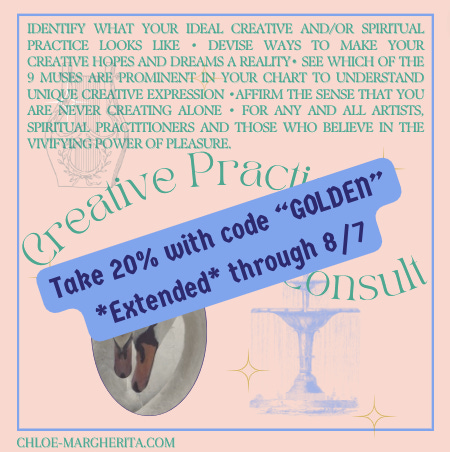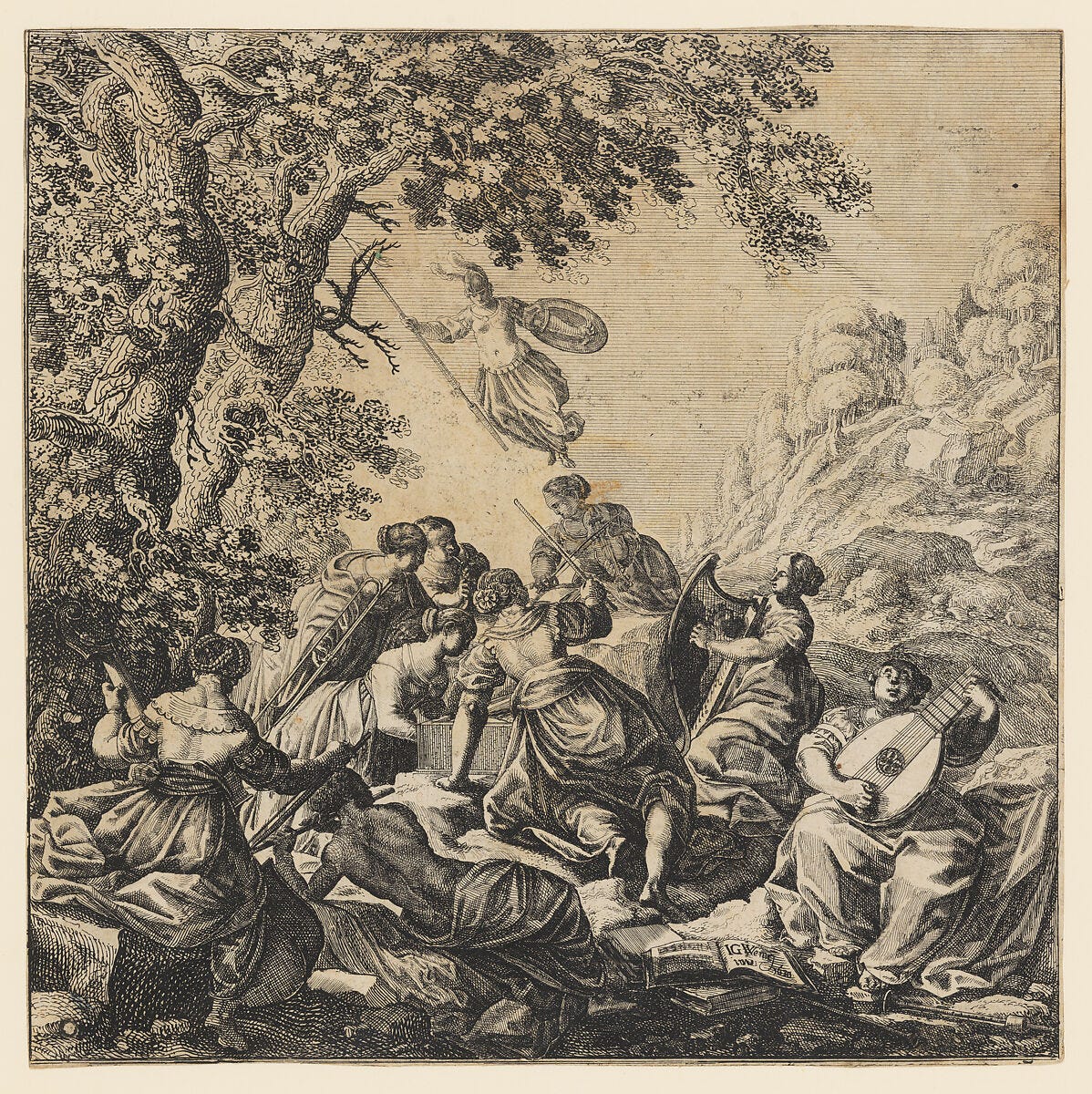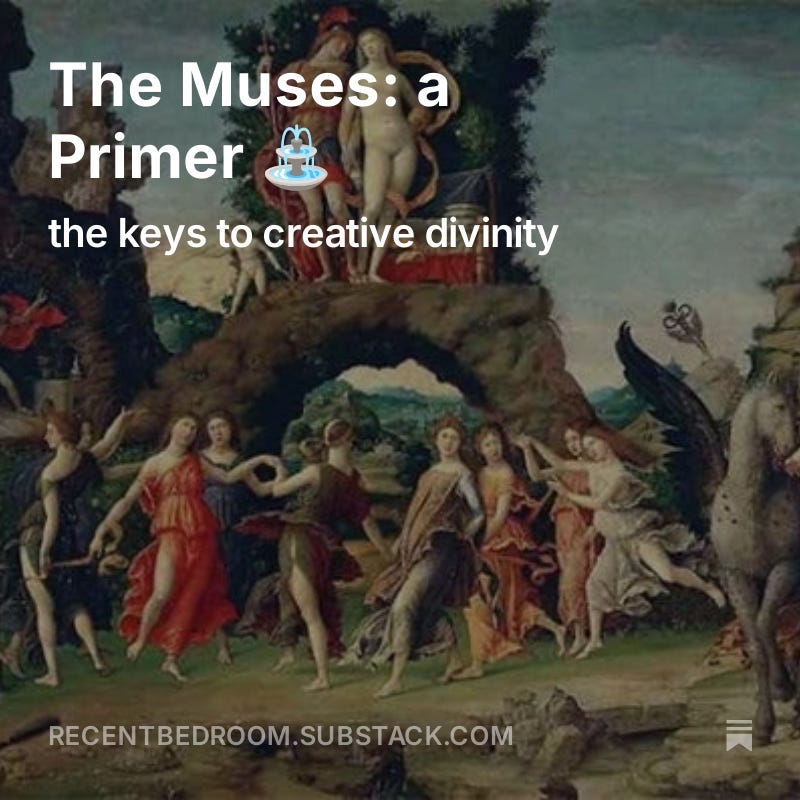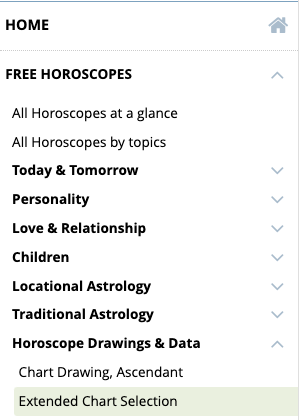*Creative Practice Sale Extended*
To honor Venus’s movement into Virgo and the upcoming Mercury-Venus conjunction, I have extended my Creative Practice Readings Sale through 8/7, when the transit perfects.
This is a time period of revisiting old loves, inspirations, projects, ideas.
This is a time to combine your love with your talents.
My Creative Practice readings help reacquaint you with your Muse, with your divine birthright to create.
Take 20% off with code GOLDEN.
If you are curious about the Muses themselves and how they operate in our lives, read on.
My obsession with the muses started early. Like many fated connections, I can’t point to a specific instance when they entered my life but they seem to have always been there, a favored obsession always gesturing towards more than they initially revealed. Twinned with my creativity aspirations was the allure of 9 goddesses who specifically cater to our artistic urges. But there was only so much the extant myths and texts could teach me.
It wasn’t until I started studying astrology, however, I found a way to dive deeper. You see, there is very little information on the Muses beyond their lineage and assigned art. Once I found out about the asteroids named after each of them, however, I knew these deities held a key to our creative practice and can help shape our artistic activities.
In the past, I’ve given a basic overview of the Muses in mythology, their role in creativity, and how they show up in astrology. Today, I want to expand that by helping you begin to get more intimate with the 9 muses to see how they can impact and uplift your creative process.
After a basic introduction to the Muses as deities, I will explain how to calculate which Muse asteroids are alive in your chart and then provide brief overviews on the skills, technês, and vibes of each of the muses. I plan on exploring each of them in-depth as time goes on, but wanted to give y’all a taste of their individual magic first so you can begin your own relationship to them.
May this writing bless your creativity and relationship to the divine.
The Muses: an Introduction
The Muses are the Greek goddesses of inspiration and creativity. Zeus, according to Hesiod, visited the titan Mnemosyne (meaning “memory”) nine nights in a row and from those separate trysts came the Nine Muses. They were said to be born in Pieria, at the foot of Mount Olympus, and reside at Mount Helicon, where springs sacred to them flourish.
Each of the nine rules a certain form of art. Kalliope, for example, is the muse of epic poetry while Klio is the muse of history. As their mother’s name literally means memory, there’s a strong connection to these deities and the act of remembering or recounting some past event. But the Muses are by no means historians or objective relayers of facts. “The power which we find most frequently assigned to them, is that of bringing before the mind of the mortal poet the events which he has to relate” William Smith tells us “and that of conferring upon him the gift of song, and of giving gracefulness to what he utters”2
You did not call upon them for technical skill but, as Penelope Murray puts it in her essay "Poetic Inspiration," "for some other quality, be it knowledge of past events, access to truths normally hidden from human minds, the immortalization of the subject of the poem, or the enhancement of its performance; in short, some quality which lies beyond the poet’s own powers" (emphasis mine).
Inspiration, in other words, implies some connection taking us us outside of ourselves and into something else. Poets, who always invoked the muses at the beginning of their lyrics, were not only described as "entheos (literally “having a god inside”)," but also as "out of [their] mind (ekphrōn)”. They made space in their bodies for the voice of the divine by exiting the mind. Through the Muses, you and your art are a vessel for the divine.
We turn to the Muses to bring us creative inspiration, to help us attune to the divine frequency that only we can hear, so that we may externally manifest what is in our heart and recount our experiences in our unique manner.
How to Calculate the Muses in your Chart
As there are nine Muses, there are also nine different roads and journeys to take through your creative process. Where to start? There are two ways to begin:
pick the muse whose skill best aligns with your current vibe/project/genius
see which Muse asteroids are prominent in your chart
Each Muse has an asteroid named after her. To calculate their presence in your chart go to astro.com and choose “Free Horoscopes” then “Extended Chart Selection” from the drop-down menu on the left.
From there, click the “additional objects” tab at the bottom and click “Asteroid name/number list with 24836 names”. You can manually look up the name of each muse or input their numbers as follows:
Erato: 62
Euterpe: 27
Kalliope: 22
Klio: 84
Melpomene: 18
Polyhymnia: 33
Terpsichore: 81
Thalia: 23
Urania: 30
You can also just copy and paste this numerical list into the “Manual Entry” Box: 27,22,18,84,33,81,23,30,62
Then click “show the chart” and the asteroids will appear in your natal chart!
Not all of them will be important. Stick only to conjunctions within 3º of a natal placement, or when an asteroid is in the same sign as a placement and 3º or less away from it. If you have your Venus at 14º Cancer, for example, and Thalia at 11-17º Cancer, then she is considered conjoined your Venus and thus impacts your divine creativity.
The Nine Muses: an Introduction
Kalliope
Muse of epic poetry and eloquence
Kalliope is canonically the leader and eldest of the muses. She, along with Urania, is singled out “for these are the Mousai who are chiefly concerned with heaven and thought, divine as well as human, and they have the sweetest utterance”. She, along with the literal Muse of the heavens, is considered closest to the divine, only further uplifted by her relationship to royalty. She is said to attend upon princes from when they are infants and fill them with her divine song.
This connection with the divine and esteemed leaders aligns with her rulership over epic poetry. These lengthy narratives in verse often depict the mythic history or founding of an empire, like Homer’s Illiad and Odyssey and Virgil’s The Aeneid. They showcase the heroic deeds of national, culturally significant figures such as Odysseus and Achilles, and serves as the foundational story upon which a nation is founded. Those touched by Kalliope seem to be building empires with their art. They are not just creating a single material object, per se, but a worldview, an epic narrative, with their work. They may find more success not depicting what *actually* happened but by lifting it to the level of fantastical myth. As long as it feels true, then make your kingdom there.
Keep reading with a 7-day free trial
Subscribe to Recent Bedroom to keep reading this post and get 7 days of free access to the full post archives.







